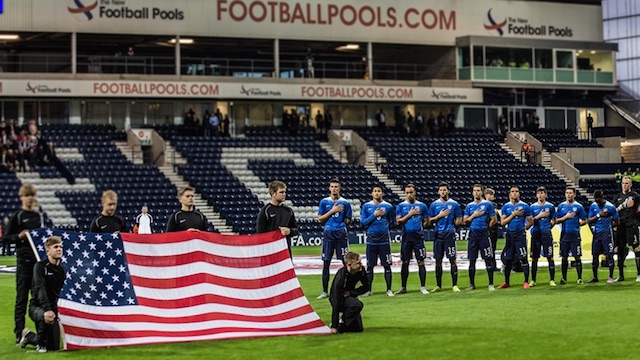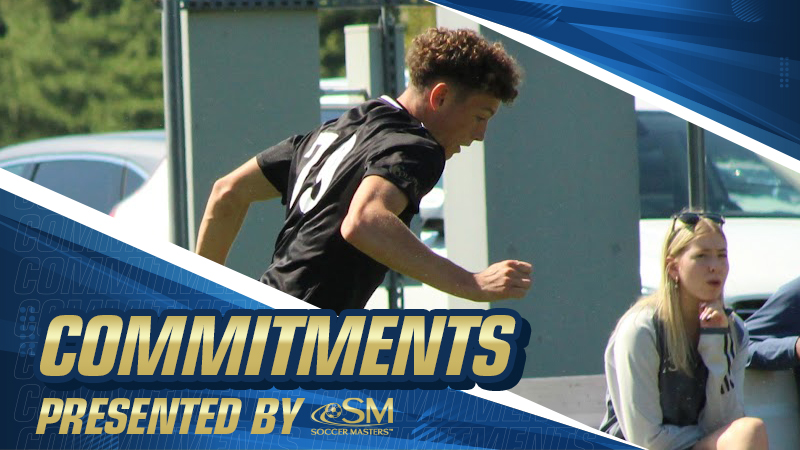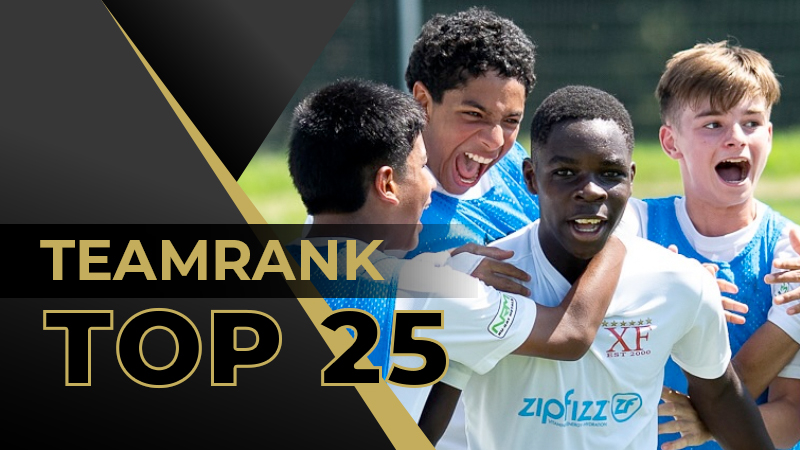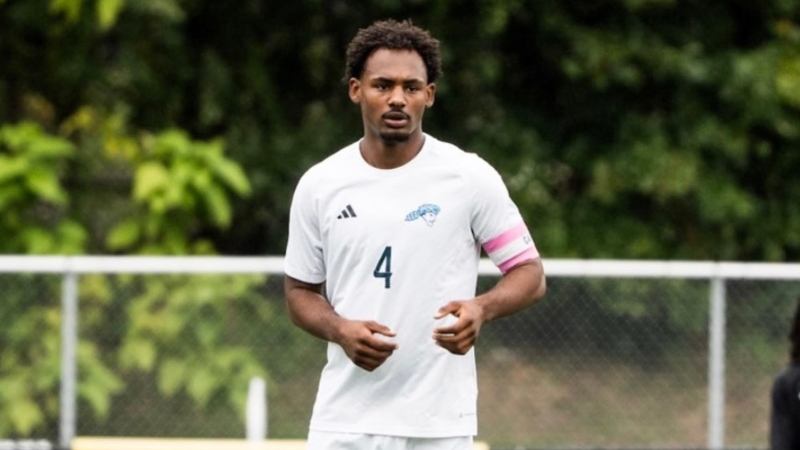Previewing U23 CONCACAF Olympic qualifying

On Thursday, CONCACAF U23 qualifying for the 2016 Rio Olympics begins in earnest for the eight teams involved. The tournament consists of two groups, from which four teams advance. Those are pitted against one another in a semifinal round, and the winners of those two matches head to the Olympics, regardless of what happens in the final.
The two losers in the semis, meanwhile, face off for the right to enter an playoff against CONMEBOL playoff side Colombia. Needless to say, everyone in CONCACAF wants to avoid that eventuality.
What follows is a glimpse at what awaits the U.S. this tournament in matches against Canada (Oct. 1), Cuba (Oct. 3) and Panama (Oct. 6). If the U.S. manages to win its group, it’ll face the second-place team out of Group B’s selection of Mexico, Honduras, Haiti and Costa Rica. Finishing runners-up in group likely means beating defending Olympic champion Mexico just to qualify for Rio. Not where the U.S. wants to be.
The U.S. U23s are seeking some measure of redemption after a previous cycle under coach Caleb Porter failed to qualify for the 2012 London Olympics. Luckily for coach Andi Herzog, the team looks well poised to do just that.
Before we go any further, this is the final U.S. roster.
U.S. Roster By Position:
GOALKEEPERS (3): Charlie Horton (Leeds; Cleveland Ohio), Ethan Horvath (Molde; Highlands Ranch, Colo.), Zack Steffen (Freiburg; Downington, Pa.).
DEFENDERS (5): Cameron Carter-Vickers (Tottenham Hotspur; Westcliff on Sea, England), Matt Miazga (New York Red Bulls; Clifton, N.J.), Eric Miller (Montreal Impact; Woodbury, Minn.), William Packwood (Unattached; Concord, Mass.), Dillon Serna (Colorado Rapids; Brighton, Colo.)
MIDFIELDERS (8): Fatai Alashe (San Jose Earthquakes; Northville, Mich.), Gboly Ariyibi (Chesterfield; Arlington, Va.), Luis Gil (Real Salt Lake; Garden Grove, Calif.), Emerson Hyndman (Fulham; Dallas, Texas), Marc Pelosi (San Jose Earthquakes; Sunnyvale, Calif.), Matt Polster (Chicago Fire; Milwaukee, Wis.), Wil Trapp (Columbus Crew SC; Gahanna, Ohio), Gedion Zelalem (Rangers; Bethesda, Md.).
FORWARDS (4): Alonso Hernandez (C.D. Juarez; El Paso, Texas), Jerome Kiesewetter (VfB Stuttgart; Berlin, Germany), Jordan Morris (Stanford; Mercer Island, Wash.), Maki Tall (FC Sion; Washington, D.C.).
Let’s take a blow-by-blow look at how this week-plus could look from a couple different angles.
The ambition
It’s not the most well-publicized event in the U.S. Soccer tree, but the 2012 qualification failure for the London Olympics will go down as one of the most ignominious moments in recent sub-USMNT history. And it isn’t like the U.S. simply failed to qualify. It didn’t even emerge from its own group, which did not include Mexico. The team would’ve had to win a knockout game to qualify. The U.S. wasn’t even on the doorstep of qualifying. It was on the walkway to the house.
Why does this matter? For one, the chasm in American soccer after a player turns 18 is real. We don’t have a great professional safety net for players once they leave club soccer after high school. College soccer is a fine option for some, but it isn’t the way forward. USL is probably the closest thing to an international standard, but the MLS linkage is less than two years old. It hasn’t had time to seep into the wood grain just yet.
After a player finishes his two-year U20 cycle and the U20 World Cup (assuming he gets there) wraps, historically players have been dropped into a deepening YNT abyss with few places to turn. The recent establishment of a U21 rung will help slightly, but the Olympics is essentially the only non-senior team carrot at the end of the treadmill once a player is done at the U20 level. And that’s not ideal, considering it only rolls around once every four years as opposed to the biannual YNT World Cups at the U17 and U20 levels. So the fact that the U.S. was robbed of even that four years ago was a hammer blow one assumes then-coach Caleb Porter has not forgotten.
That should hopefully drive this side onto better things this cycle. Herzog should understand as well as anyone that his mandate out of CONCACAF is essentially the same as it is at every level: qualification isn’t an option. It’s a must.
The team
As for the tournament itself, this is a considerably stronger team than the one that assembled for qualifying four years ago. And that quality travels all the way up the spine.
Here’s the surest sign: Ethan Horvath is on incredible form for club side Molde, and he recently starred in goal for the team’s 3-1 win over Robin van Persie and Nani’s Fenerbahce in the Europa League. Whether that was enough for him to supplant Zack Steffen, the U20 World Cup hero from earlier this year, we can’t be sure. That’s especially the case since Horvath won’t be released from Molde until the FIFA window, meaning Steffen is almost guaranteed to start at least the first two games, with apologies to Charlie Horton. And the prospect of Herzog shuffling his keeper mid-tournament doesn’t seem all that likely.
Herzog is only bringing five dedicated defenders, which makes the U.S. thin at the back. That said, the center back duo of Cameron Carter-Vickers and Matt Miazga was in soaring form at the U20 World Cup earlier this year, so it wouldn’t be a surprise (in fact, it’d probably be the smartest move) to see them reunited at this stage. Miazga is used to first team soccer with the New York Red Bulls, and Carter-Vickers is the size of a bull. It works.
The midfield is where this team will make its hay. Some combination of Gedion Zelalem, Emerson Hyndman, Wil Trapp and Fatai Alashe is likely based on recent form and Herzog’s willingness in recent friendlies to play a 4-4-2. This could also easily be a 4-2-3-1 with Trapp and Alashe sitting deep (Polster is also an option considering his quality form for Chicago) and Hyndman, Zelalem and perhaps Ariybi across the middle. There are options with this midfield, but most of them are encouraging. Every U.S. fan, though, is probably most excited to see how a loan spell at Rangers has rubbed off on Zelalem. He easily has the highest upside of any player on that roster.
The forward line is just as top-heavy as the back line. Hernandez and Kiesewetter (who could play wide in a 4-2-3-1, it should be said) are clear second choices to Jordan Morris and Maki Tall, who was busy ripping up the U20 World Cup before an injury in the group stage forced him to miss the rest of the tournament. As for Morris, he’s closer to full speed than at any time since suffering a stress fracture early in the summer that kept him out of the U.S.’s Gold Cup roster. He’s already bagged a couple goals for Stanford.
The opposition
Tournaments like these aren’t often heavy on scouting. Teams are typically content to have some cursory information on the opponent while mainly focusing on its own tactical setup. That’s fine on a YNT level, so long as that lack of top-down scouting doesn’t lead to hubris. One might conclude the U.S. took its group stage opponents too lightly in 2012, which contributed in some part to its ultimate downfall. Not having much defensive backup didn’t help.
The U.S., of course, avoids Mexico until the knockout round, and if both teams win their group like they should - that’s more likely on Mexico’s part considering they, uh, won the 2012 tournament - the U.S. won’t have to beat Mexico to qualify. That’s good. But they’ll have to get through the group first.
The U.S. faces Canada, Cuba and Panama in that order. For obvious reasons we can wax on Canada more than the other two, considering 14 of the team’s 20 players appeared for the senior Canadian team already and a few are in MLS systems. Essentially, the two Canadians who’ll most likely cause the most noise are midfielder Jay Chapman and forward Michael Petrasso. The former is a promising Toronto FC youngster after starring at Michigan State, while Petrasso is currently embedded in QPR’s system in England and has beaucoup promise. Whatever Canada does going forward, it’ll almost certainly revolve around those two.
As for Cuba and Panama, good luck. Cuba is the enigma it always is, considering the geopolitical realities of actually seeing or scouting any Cuban club team. All 20 of Cuba’s U23 players play for clubs in Cuba, and while a number of them have senior team experience, none of the names will be familiar, even to those who possess more than a good deal of CONCACAF knowledge.
Panama will be more familiar. Forward Francisco Narbon currently plies his trade at James Madison, and a number of these players were key cogs for Panama’s respectable run to the U20 World Cup. Defender Roberto Chen is perhaps the biggest “name,” after he clinched a sale to La Liga side Malaga in 2013. He’s had two relatively uneventful loans since, but he’s still a top player to watch. Incredibly, forward Abdiel Arroyo - nicknamed El Pistolero - has more than 20 goals as a pro already.
The U.S. will be favored in all three of these games, which adds a sense of urgency to the tournament. As if it even needed to be said, failing to advance out of the group stage for a second consecutive tournament is not an option. Neither is failing to qualify.
Headlines
- Recruiting Roundup: December 22-January 4
- Vote for Men's College Soccer Best Goal
- 2026 Women's Division I Transfer Tracker
- Vote for Women's College Soccer Best Goal
- TDS Fall High School Boys Best XI
- TopDrawerSoccer TeamRank Update - Boys
- TDS Fall High School Girls Best XI
-
Commitments: Decided on Delaware

- TDS Girls Regional Rankings: Class of 2027
-
Draft Picks Who Can Make MLS Impact




